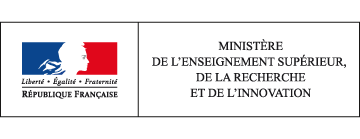OECD
Organisation pour la Coopération et le Développement Économique
2 Rue André Pascal, 75016 Paris
http://www.oecd.org/
This source is used in these chapters:
Gross domestic expenditures on experimental research and development (GERD) has grown at an average annual rate of 1.6% over the past 15 years. This growth was driven mainly by the dynamism of domestic R&D spending by enterprises (1.9% on average annually). GERD accounts for 2.24% of GDP in 2014, or 47.9 billion euros. The companies carry out 65% of the R&D work carried out on the national territory and finance 61% of the national R&D expenditure. [read more]
In 2014, half of intramural business expenditure on R&D (BERD) was focused on six industrial branches (‘Manufacture of motor vehicles’, ‘Manufacture of air and spacecraft and related machinery’, ‘Manufacture of basic pharmaceutical products and pharmaceutical preparations’, ‘Computer-related and information service activities’, ‘Professional, scientific and technical activities’ and ‘Manufacture of chemicals and chemical products’). In the public sector, dedicated research institutions (EPST and EPIC) carried out 54% of all R&D funded by intramural government expenditure (GOVERD). [read more]
Businesses based in France fund around 55% of the country’s gross domestic expenditure on R&D (GERD). Total expenditure on R&D by firms is €36.8 billion, which is 85% funded by companies in France and 7% by the government. [read more]
In 2014, over half a million people were involved in research activity in France. Women represented 30% of all research personnel and 26% of researchers. The number of researchers, 266,700 full-time equivalent (FTE) in 2014, has increased by 15% in five years. The number of researchers increased more rapidly in business enterprises (21%) than in government (6%) over the period 2009-2014. [read more]
In 2014, women represented 30% of all research personnel, and a little over a quarter of researchers. Furthermore, 36% of government research personnel are women compared to 20% in business enterprises, a contrast that is not unique to France. The proportions differ according to the field of research, with the most women being present in medicine, chemistry and agronomy. [read more]



